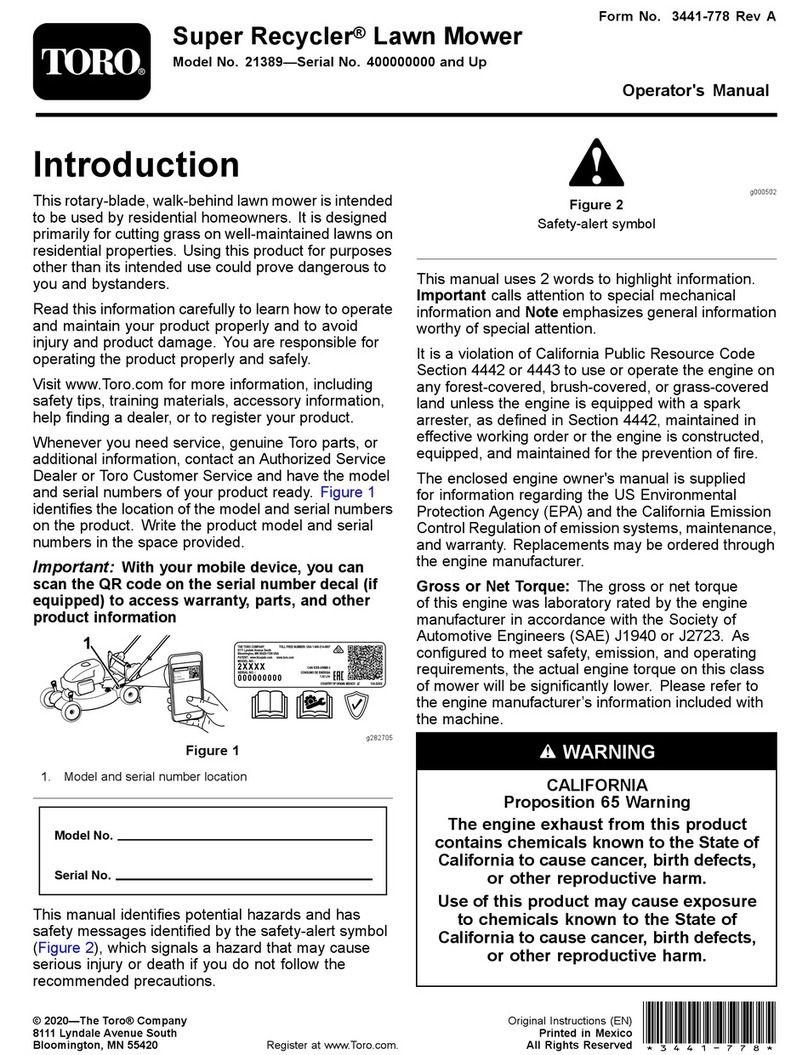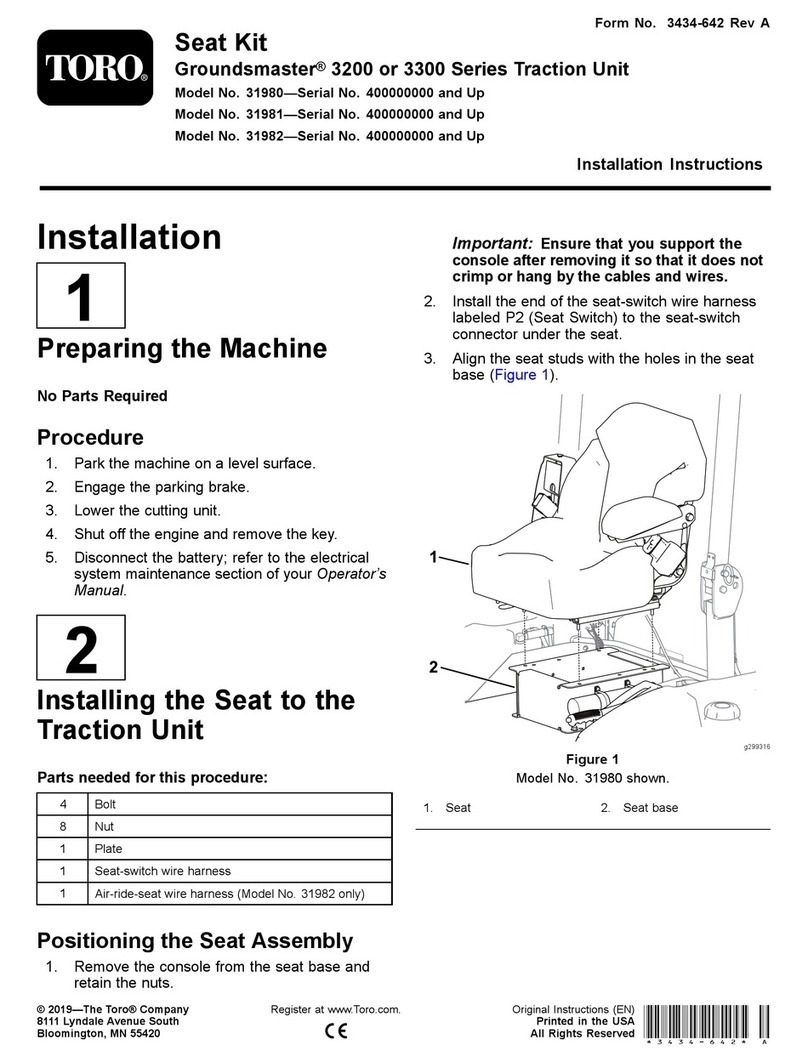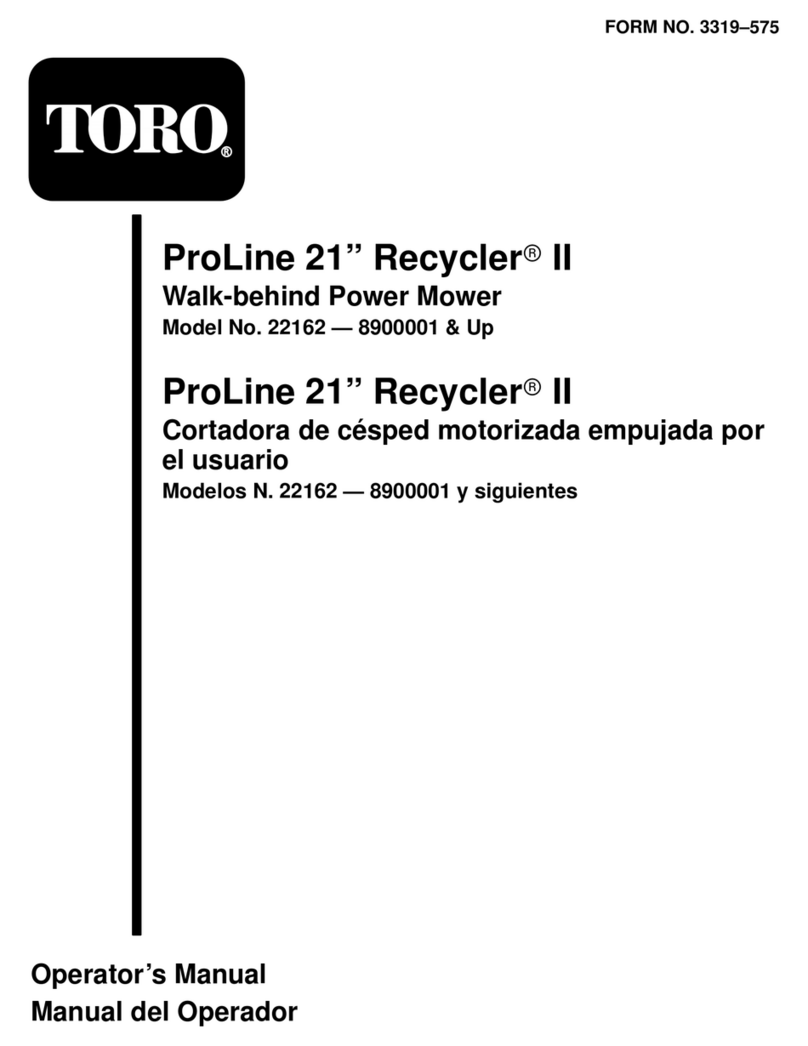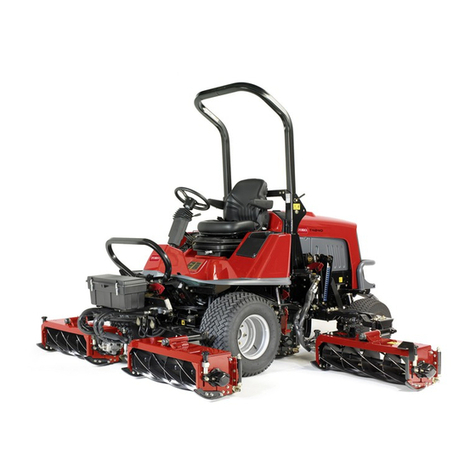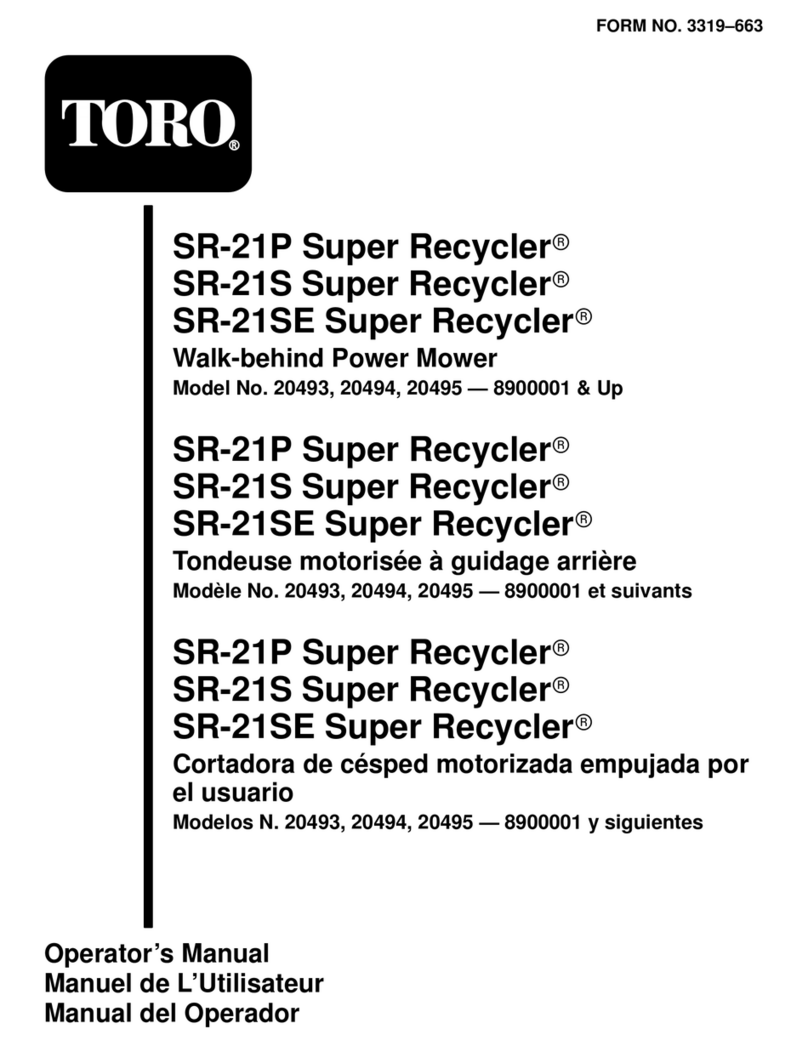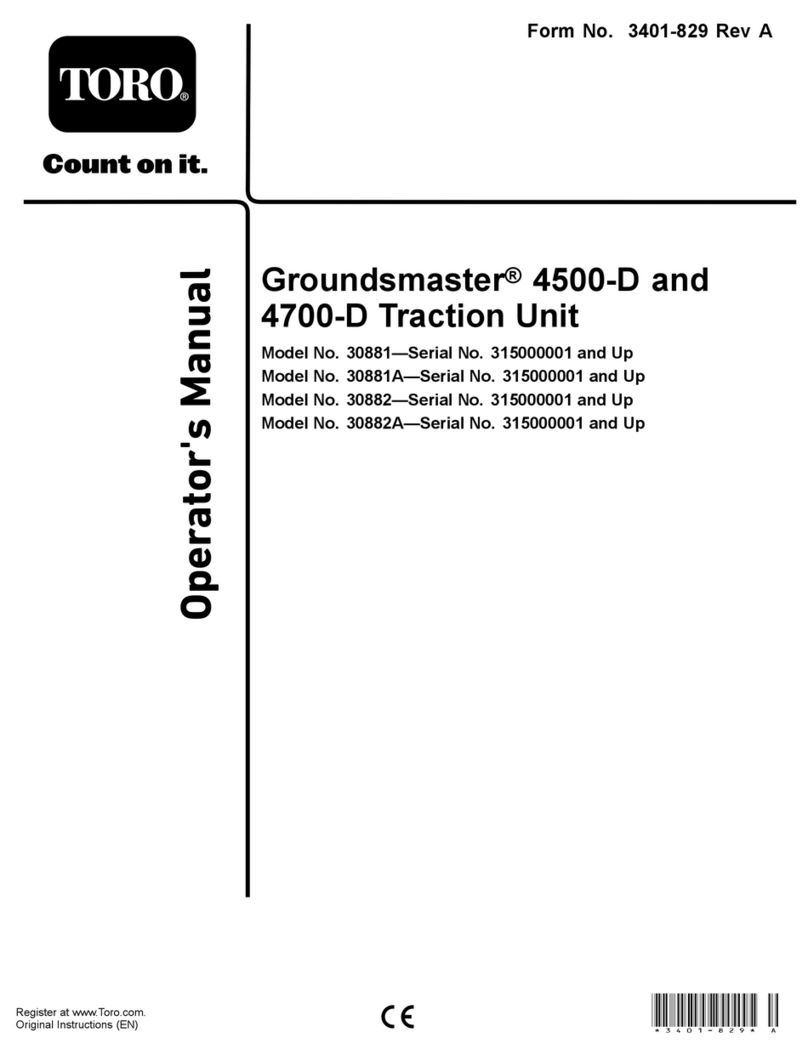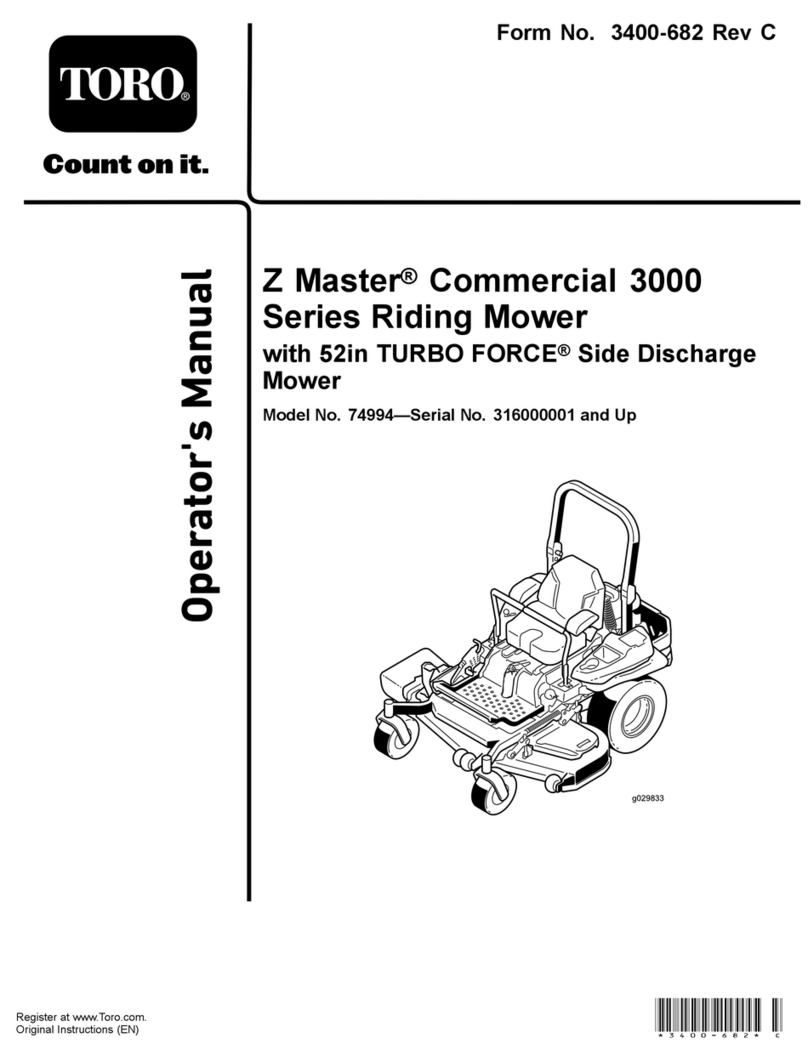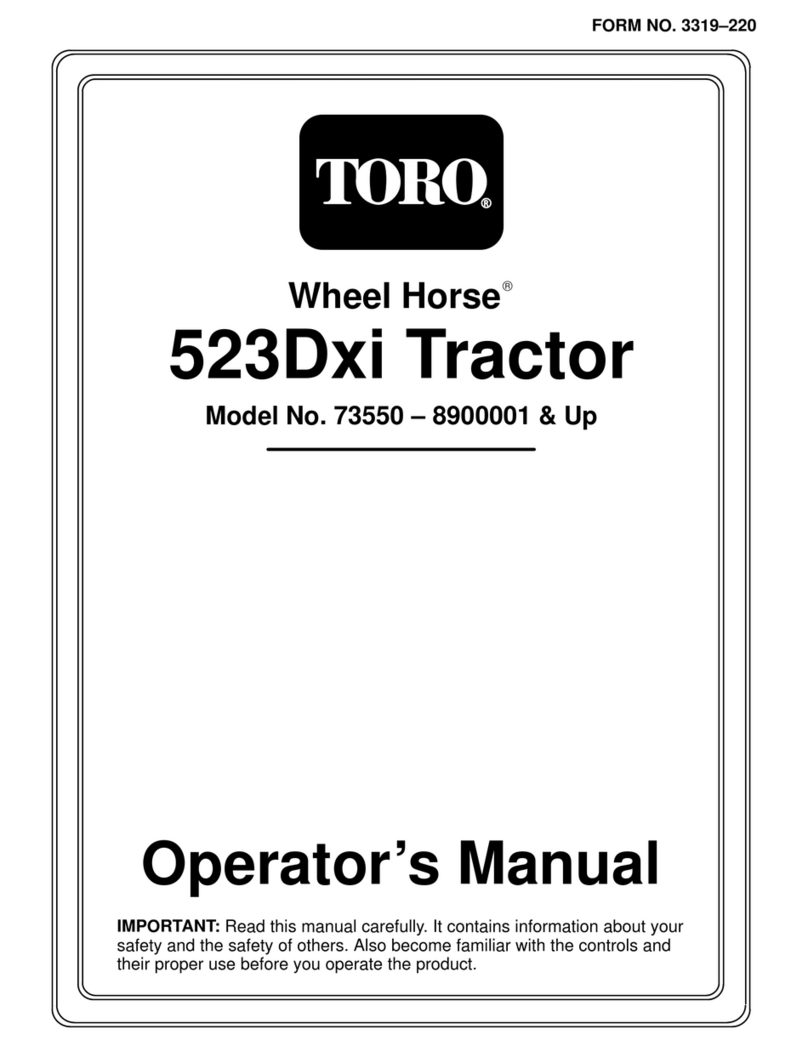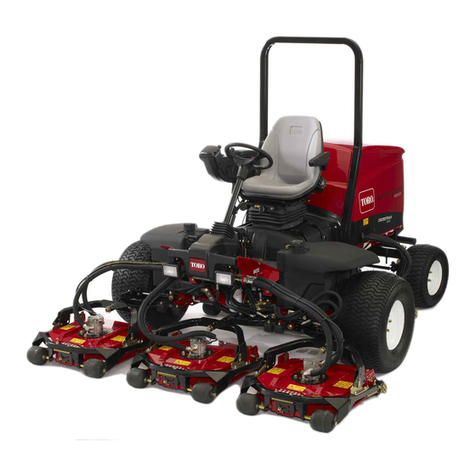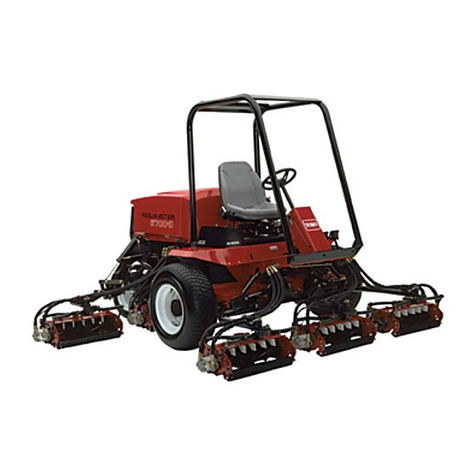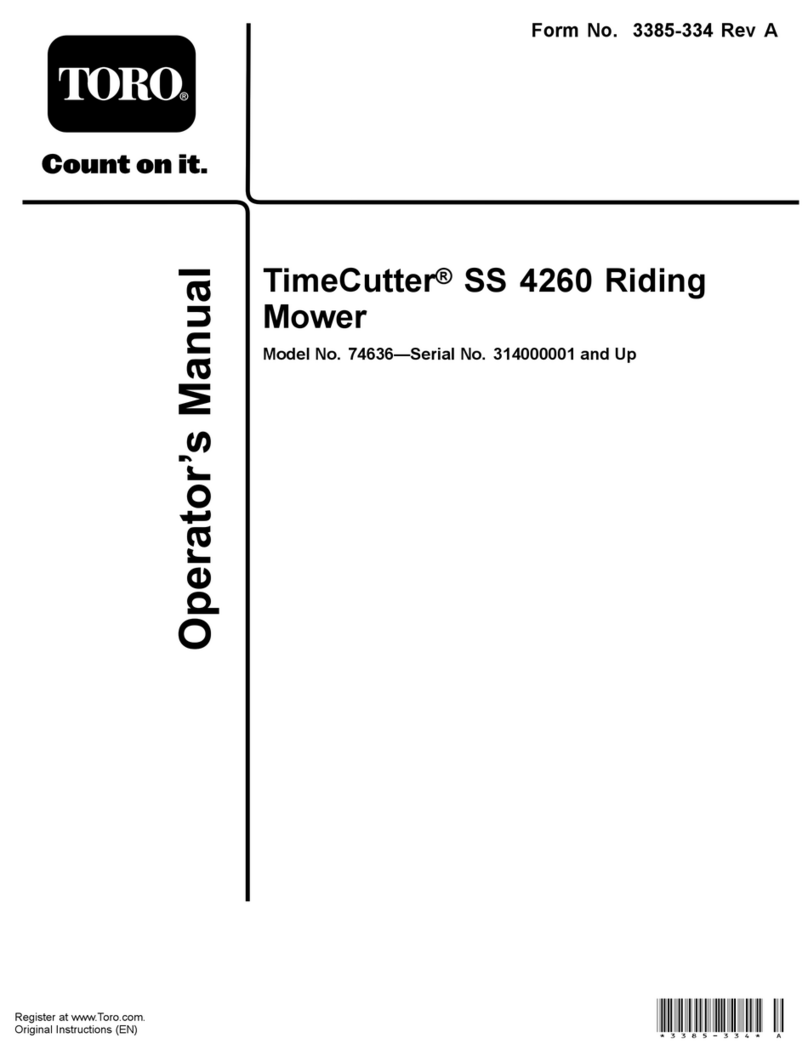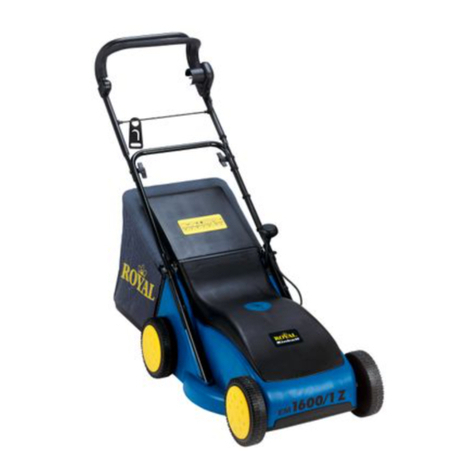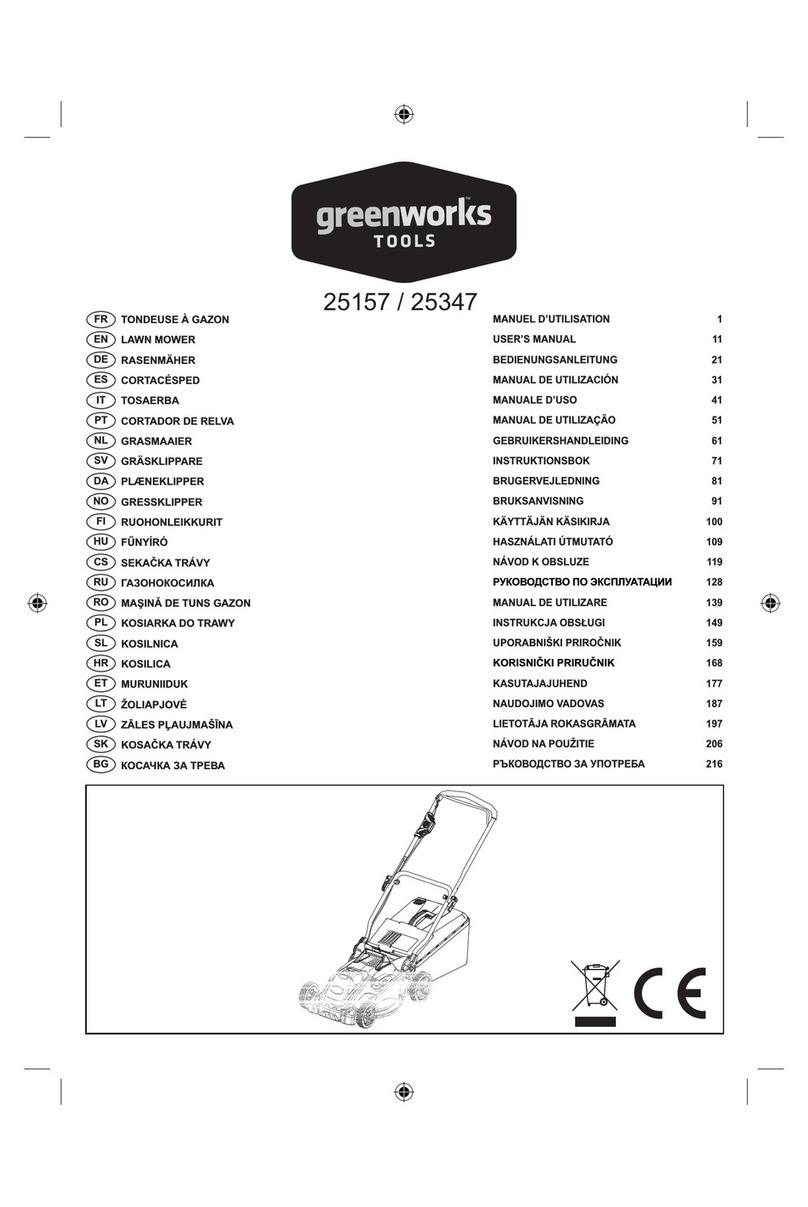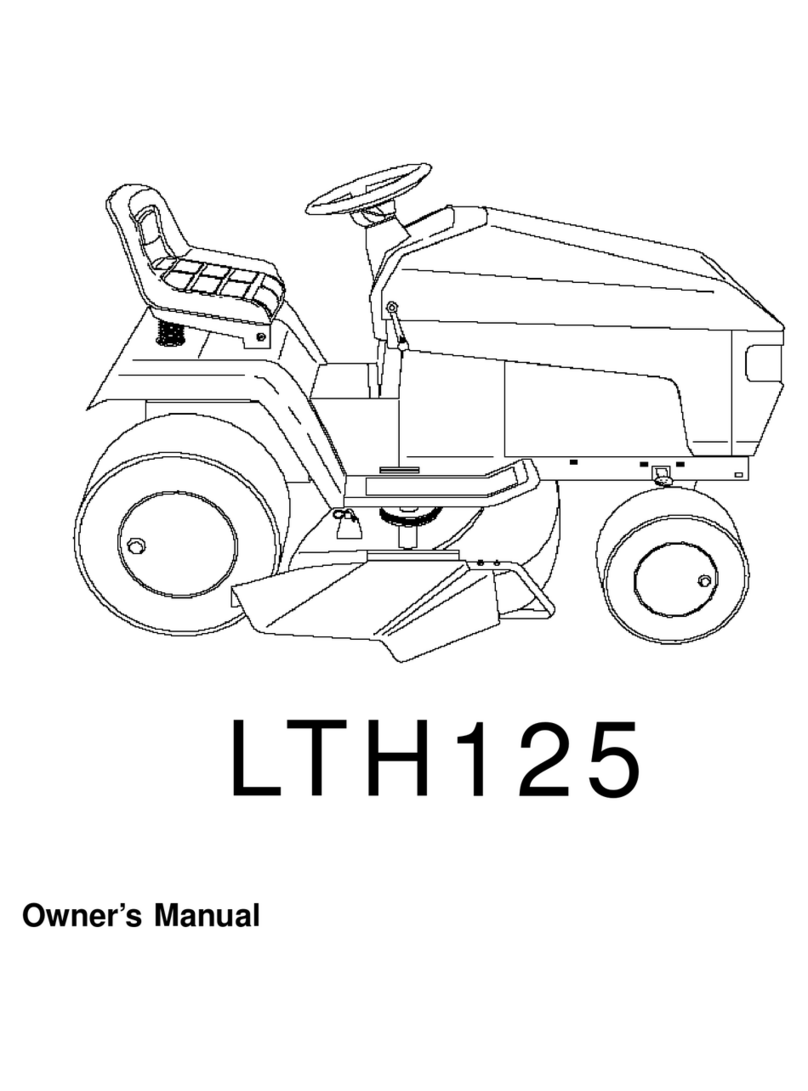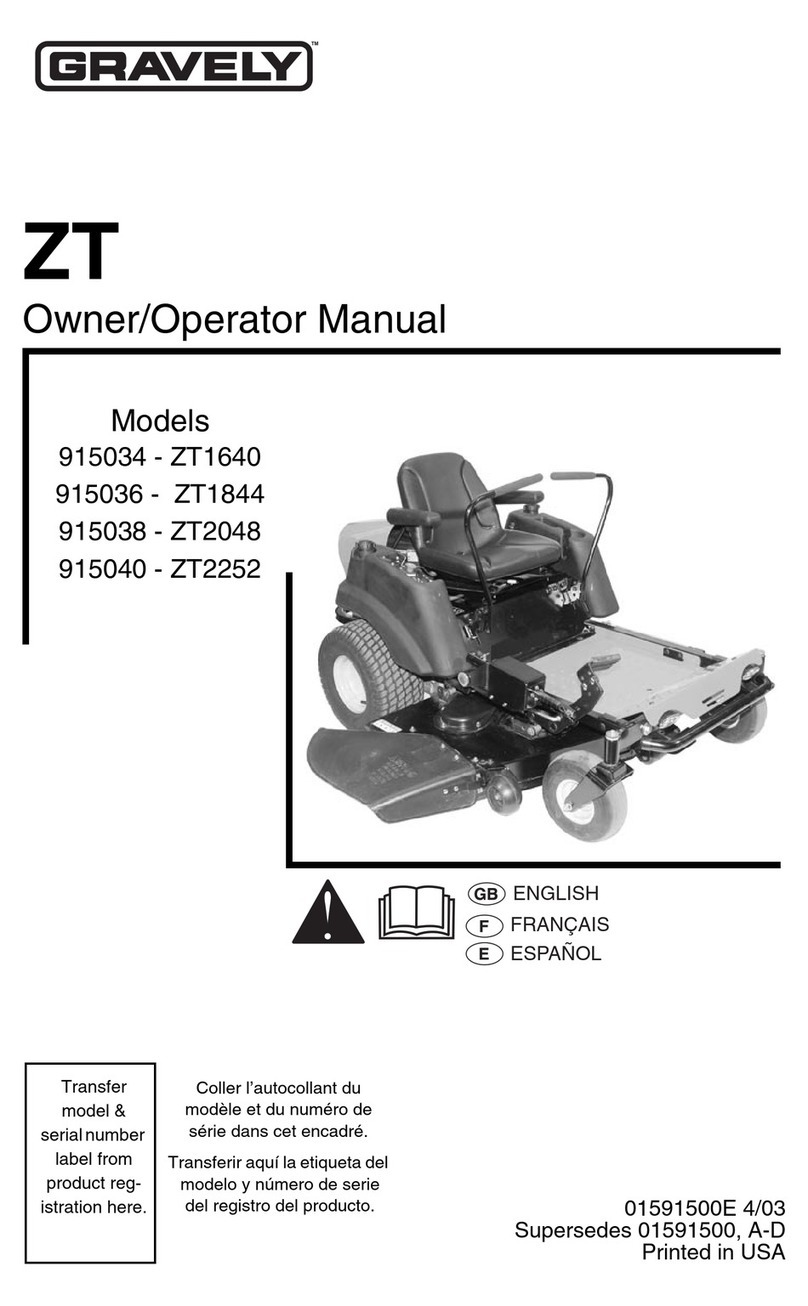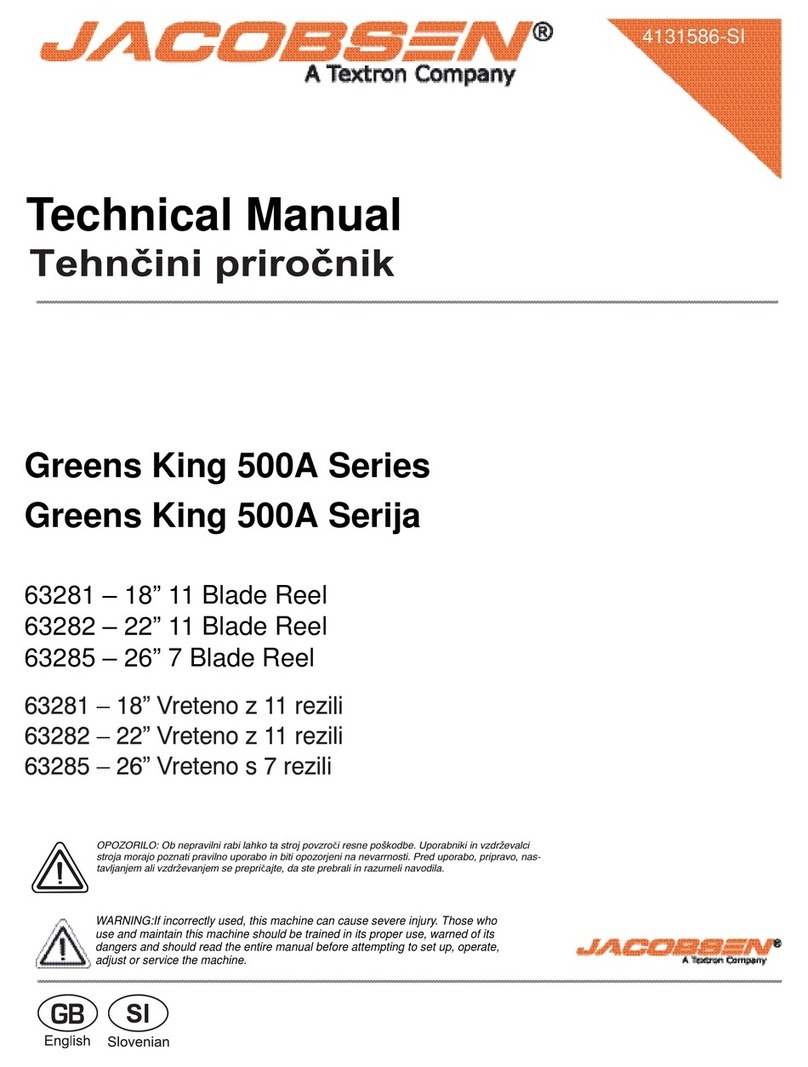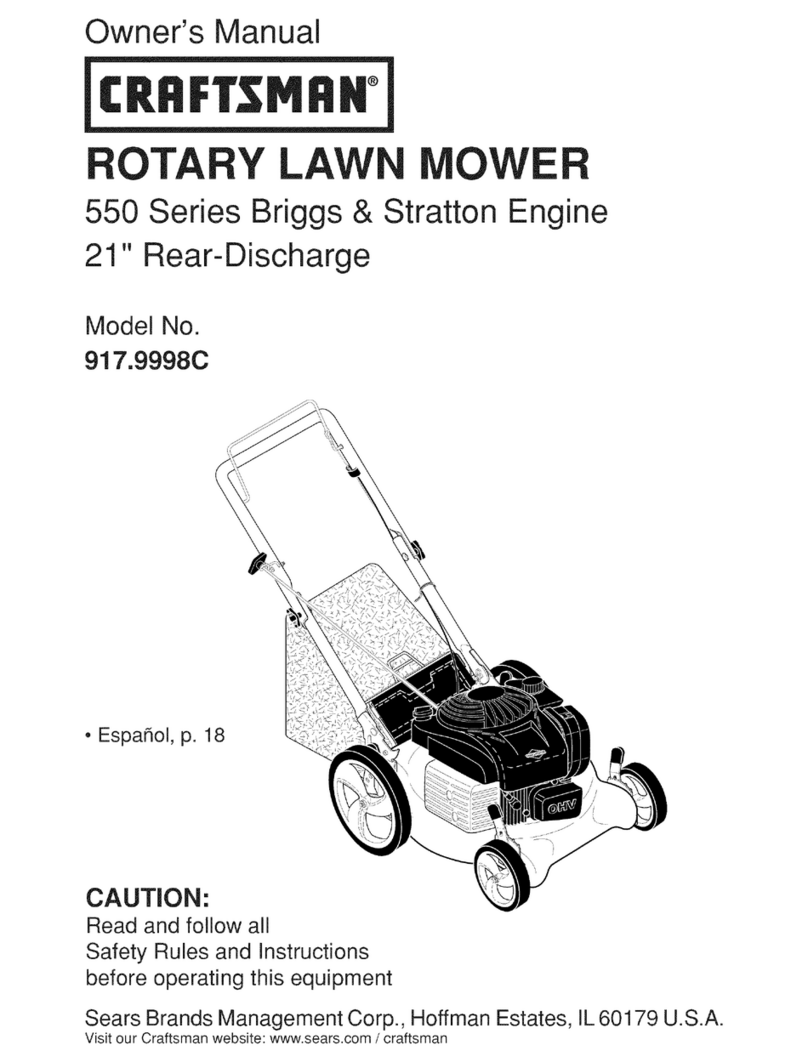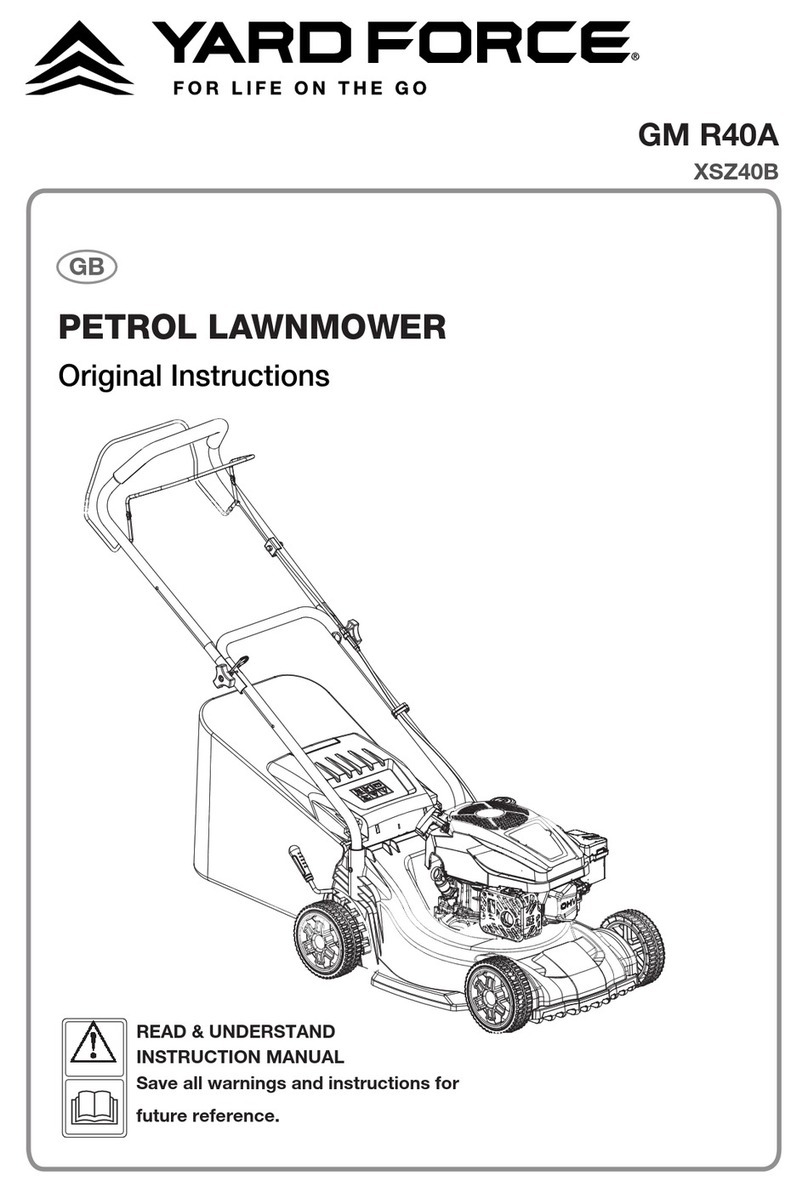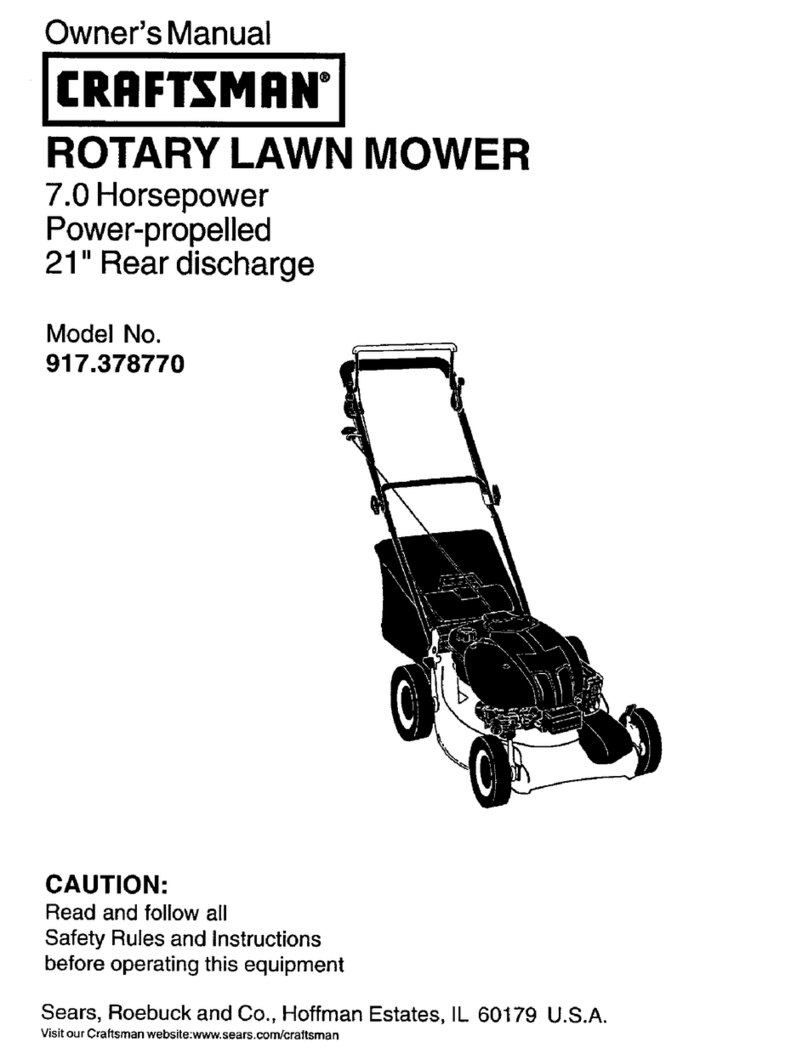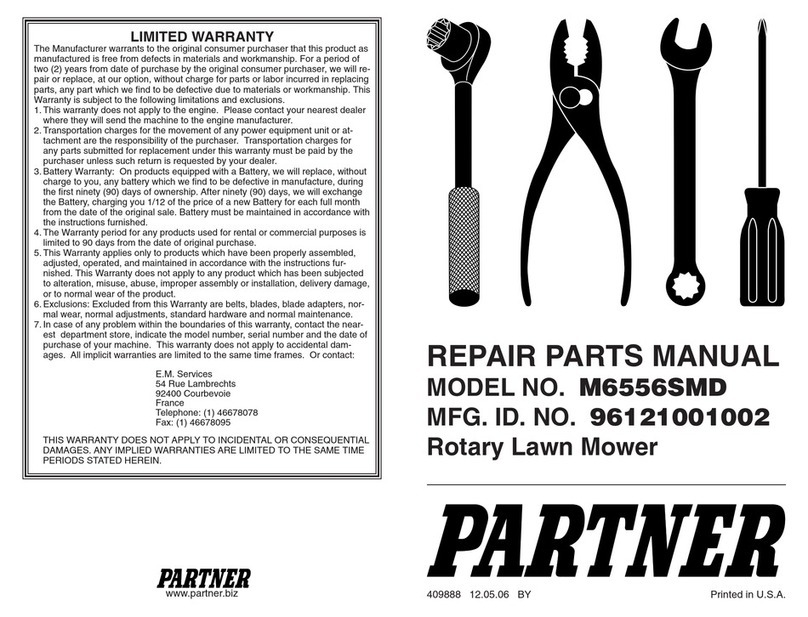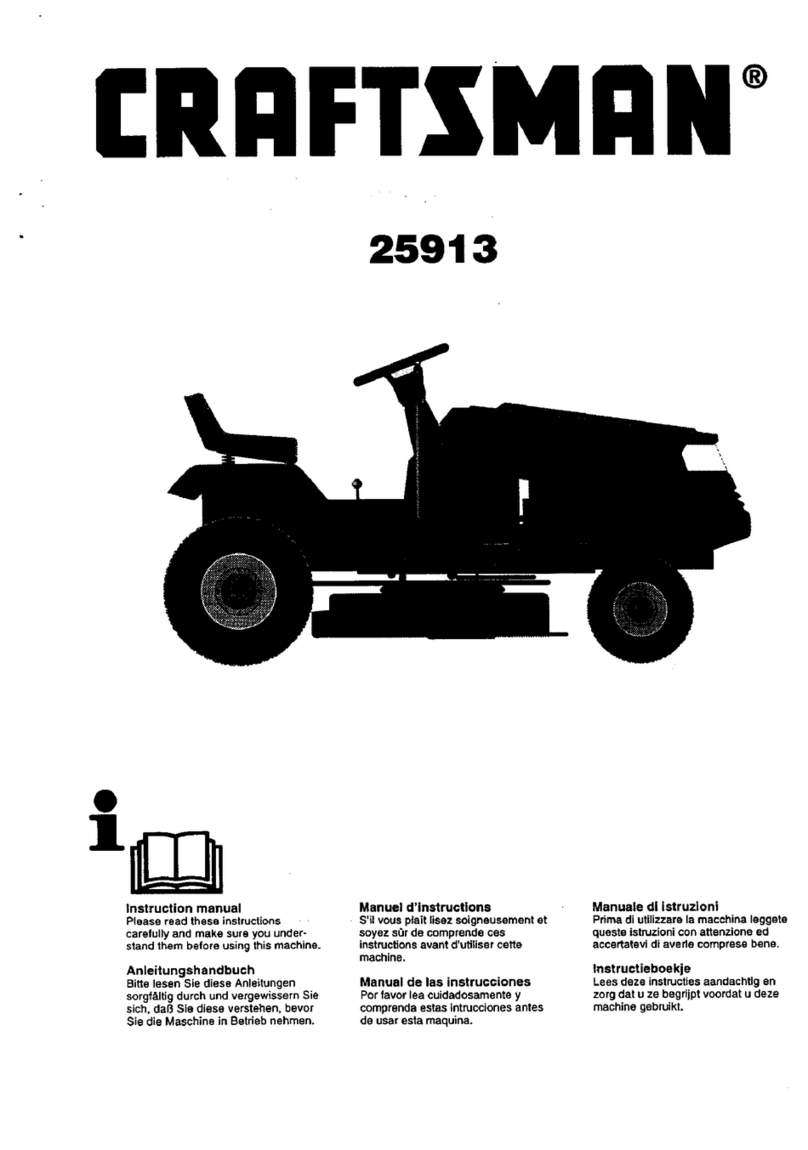
•R emember there is no suc h thing as a safe
slope . T ra v el on g rass slopes requires par ticular
care . T o guard ag ainst o v er tur ning:
– do not stop or star t suddenly when g oing
up or do wnhill;
– eng ag e clutc h slo wly , alw a ys k ee p mac hine
in g ear , especially when tra v elling do wnhill;
– mac hine speeds should be k e pt lo w on
slopes and during tight tur ns;
– sta y aler t for humps and hollo ws and other
hidden hazards;
– nev er mo w across the face of the slope ,
unless the la wn mo w er is designed for this
pur pose .
•Use care when pulling loads or using hea vy
equipment.
– Use only appro v ed dra wbar hitc h points .
– Limit loads to those y ou can safely control.
– Do not tur n shar ply . Use care when
rev ersing .
– Use counterw eight(s) or wheel w eights
when sug g ested in the instr uction
handbook.
•W atc h out for traffic when crossing or near
roadw a ys .
•Stop the blades rotating before crossing
surfaces other than g rass .
•W hen using any attac hments , nev er direct
disc harg e of material to w ard b ystanders
nor allo w any one near the mac hine while in
operation.
•Nev er operate the mac hine with damag ed
guards or without safety protecti v e devices in
place .
•Do not c hang e the engine g o v er nor settings or
o v erspeed the engine . Operating the engine
at ex cessi v e speed can increase the hazard of
personal injur y .
•Before lea ving the operator’ s position:
– diseng ag e the po w er tak e-off and lo w er the
attac hments;
– c hang e into neutral and set the parking
brak e;
– stop the engine and remo v e the k ey .
•Diseng ag e dri v e to attac hments , stop the
engine , and disconnect the spark plug wire(s)
or remo v e the ignition k ey
– before clearing bloc kag es or unclog ging
c hute;
– before c hec king, cleaning or w orking on
the la wn mo w er;
– after striking a foreign object. Inspect
the la wn mo w er for damag e and mak e
re pairs before restar ting and operating the
equipment;
– if the mac hine star ts to vibrate abnor mally
(c hec k immediately).
•Diseng ag e dri v e to attac hments when
transpor ting or not in use .
•Stop the engine and diseng ag e dri v e to
attac hment
– before refuelling;
– before remo ving the g rass catc her;
– before making height adjustment unless
adjustment can be made from the operator’ s
position.
•R educe the throttle setting during engine
r un-out and, if the engine is pro vided with
a shut-off v alv e , tur n the fuel off at the
conclusion of mo wing .
Maintenance and Storage
•K ee p all n uts , bolts and screws tight to be sure
the equipment is in safe w orking condition.
•Nev er store the equipment with fuel in the
tank inside a building where fumes can reac h
an open flame or spark.
•Allo w the engine to cool before storing in any
enclosure .
•T o reduce the fire hazard, k ee p the engine ,
silencer , batter y compar tment and fuel storag e
area free of g rass , lea v es , or ex cessi v e g rease .
•Chec k the g rass catc her frequently for w ear or
deterioration.
•R e place w or n or damag ed par ts for safety .
•If the fuel tank has to be drained, this should
be done outdoors .
•On m ulti-bladed mac hines , tak e care as rotating
one blade can cause other blades to rotate .
•W hen mac hine is to be park ed, stored or left
unattended, lo w er the cutting means unless a
positi v e mec hanical loc k is used.
5

